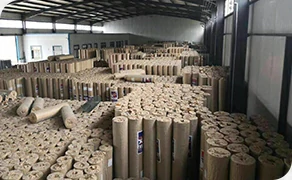 TEL:
+86-13102802206
TEL:
+86-13102802206
 Email:
fencenetting@china.com
Email:
fencenetting@china.com
 Language
Language
 TEL:
+86-13102802206
TEL:
+86-13102802206
 Email:
fencenetting@china.com
Email:
fencenetting@china.com
 Language
Language


The Role of Gabion Walls in River Management
In the realm of civil engineering and environmental conservation, the management of riverbanks is a crucial challenge. Rivers shape our landscapes, support biodiversity, and provide vital resources for communities. However, they also pose risks such as erosion, flooding, and habitat destruction. One innovative solution to these issues is the use of gabion walls.
Gabion walls are structures made from wire mesh boxes filled with rocks, stones, or other materials. They have been utilized for centuries to control erosion and stabilize slopes, but their application in river management is increasingly recognized for its effectiveness and sustainability. The design and construction of gabion walls take into account the natural flow of water, allowing them to blend seamlessly into the surrounding environment while providing significant structural benefits.
The Role of Gabion Walls in River Management
Furthermore, gabion walls contribute positively to the ecosystem. As they are often filled with natural stones sourced from the local environment, they promote biodiversity. The gaps between the stones create habitats for various species of flora and fauna. Aquatic life can utilize the structures for shelter, while terrestrial animals may find refuge in the vegetation that grows in and around the gabions. This dual function of habitat creation and riverbank stabilization makes gabion walls an ecologically sound choice.

Another significant benefit of gabion walls is their cost-effectiveness. Compared to traditional concrete barriers, gabions are generally less expensive to install and maintain. They can be assembled and constructed with relative ease, often using locally sourced materials, which reduces transportation costs and supports local economies. Additionally, because of their permeable nature, gabion walls facilitate natural water flow and reduce the risk of flooding, leading to lower long-term management costs associated with flood damage.
Moreover, gabion walls can be adapted to various environmental conditions. They come in different shapes and sizes, allowing engineers and environmentalists to tailor their use based on specific site requirements and challenges. This versatility makes gabion walls an ideal solution for diverse river management scenarios, from urban areas that face heavy runoff to rural settings where natural landscapes need preservation.
However, while gabion walls offer many benefits, they are not without challenges. Over time, the materials within the gabions may degrade or be displaced, requiring monitoring and maintenance. Additionally, if not correctly planned and implemented, gabion walls can lead to unintended consequences, such as altering water flow patterns or creating turbulence near the structure. Therefore, careful consideration and collaboration with hydrologists and environmental experts are essential when integrating gabion walls into river management strategies.
In conclusion, gabion walls represent a compelling approach to managing riverbanks in an era where sustainability and ecological integrity are paramount. Their effectiveness in controlling erosion, promoting biodiversity, and providing cost-effective solutions showcases their potential as a vital tool in both environmental engineering and conservation efforts. As we continue to seek innovative methods to address the challenges posed by our waterways, gabion walls stand out as a practical and environmentally friendly option for safeguarding the rivers that nourish our planet.